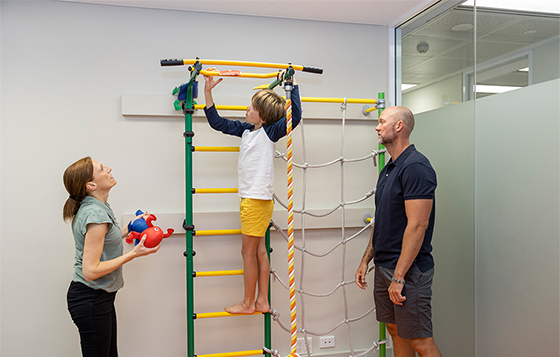
This year, Occupational Therapy (OT) Week is celebrating “80 years of Connection”, with the first OT club in Australia formed in 1944. However, OT in Australia stretches back to the World War I, when the idea of helping people to recover through activity first took hold.
So, what is an OT exactly? OTs help people of all ages to do the things they want and need to be able to do every day, like working, completing household tasks, participating in leisure/social activities and taking care of themselves. Whether it is supporting adults in their recovery or helping children to develop everyday skills through play, OTs use everyday activities to improve health and wellbeing.
Where it all began
The move from a belief in a 'rest cure' to a 'work cure' was the main impetus for the foundation of the occupational therapy profession. The profession was formally established in the US in 1917, coinciding with the onset of World War I. Soldiers returning from war in the US were able to benefit from an approach of rehabilitation, focusing on getting people back to their families and communities through active recovery.
Australia saw the benefits of these approaches, and occupational therapy was practiced in Australia during the 1930s, with the first professional association being founded in Australia in 1944.
In the years that followed, OT grew into several specialised practice areas with OTs working with people of all ages, including physical rehabilitation, paediatrics, mental health, and general medicine. By World War II, occupational therapy had become a fully recognised profession in Australia, requiring formal education and training.
The growth of OT in Australia
Today, OT continues to grow, with 29,742 OTs registered in Australia in 2022-2023. A big part of this growth came after the introduction of the National Disability Insurance Scheme (NDIS) in 2013. The NDIS created more demand for OTs, especially in paediatrics, as more children needed support in developing essential life skills. OTs who specialise in this practice area use the occupation of play to develop skills and participate more fully in life.
OT at CliniKids
Since 2019, CliniKids has been at the forefront of paediatric clinical services, including OT, for children with developmental delays and autism. As the first of its kind for autism in Australia, CliniKids uses the latest evidence-based practices to support children and their families in leading fuller, more independent lives.
OT in Australia has come a long way, and its rich history shows just how vital this profession is in supporting individuals across the lifespan.
If you are interested in accessing Occupational Therapy services for your child, please contact CliniKids on 08 6319 1133 or email clinikids.reception@thekids.org.au.
References
Ahpra & National Boards. 2023. Ahpra and National Boards annual report 2022/23. The Australian Health Practitioner Regulation Agency. https://www.ahpra.gov.au/Publications/Annual-reports/Annual-report-2023/Registration.aspx
American Occupational Therapy Association. (2020). Occupational Therapy Practice Framework: Domain and Process-Fourth Edition, 74, (Suppl.2), S1-S87. https://doi.org/10.5014/ajot.2020.74S2001
Cusick, A., & Bye, R. (2021). History of Australian occupational therapy. In T. Brown, H. M. Bourke-Taylor, S. Isbel, R. Cordier & L. Gustafsson (Eds.), Occupational Therapy in Australia: Professional and Practice Issues (pp. 31-49). Routledge. https://doi.org/10.4324/9781003116639
Jeremy, J., Spandagou, I., & Hinitt, J. (2024). A Profile of Occupational Therapist Working in School-Based Practice in Australian Primary Schools. Occupational Therapy International, 2024, 1-12. https://doi.org/10.1155/2024/2077870
NDIS. (2023). History of the NDIS. https://www.ndis.gov.au/about-us/history-ndis
Occupational Therapy Australia. (n.d.). About. https://otaus.com.au/about/about-ota
